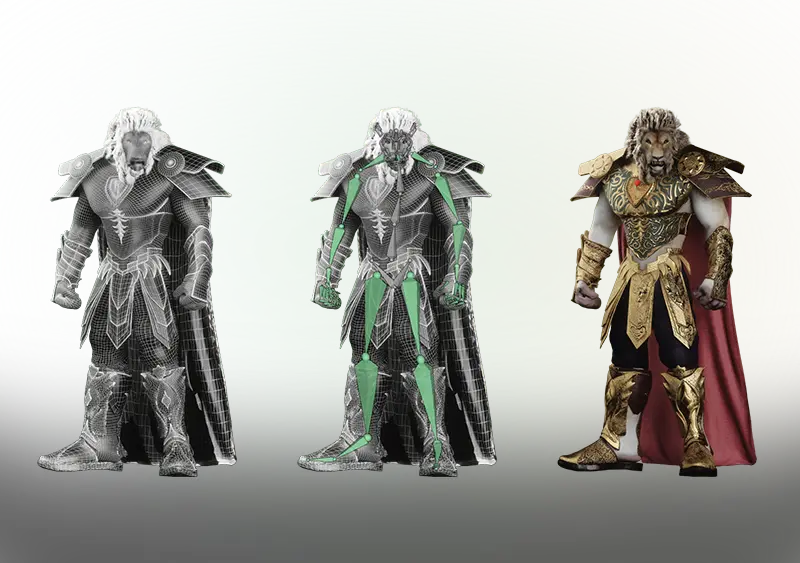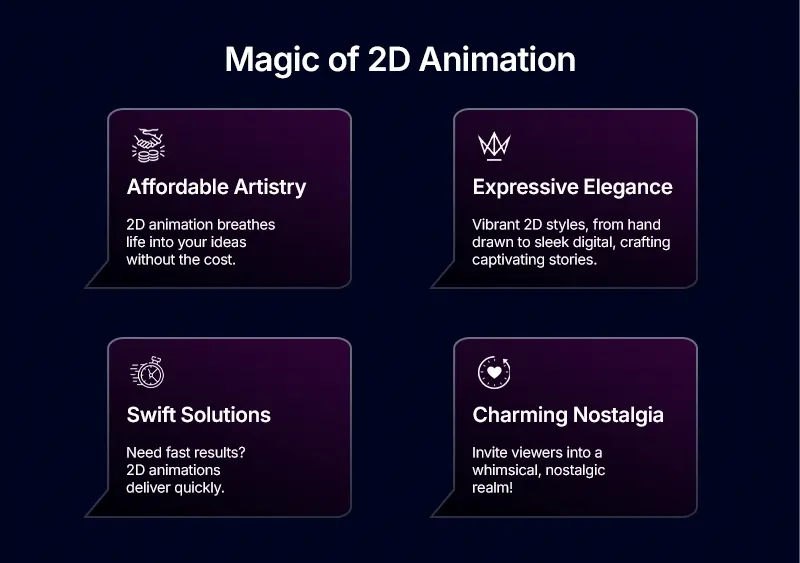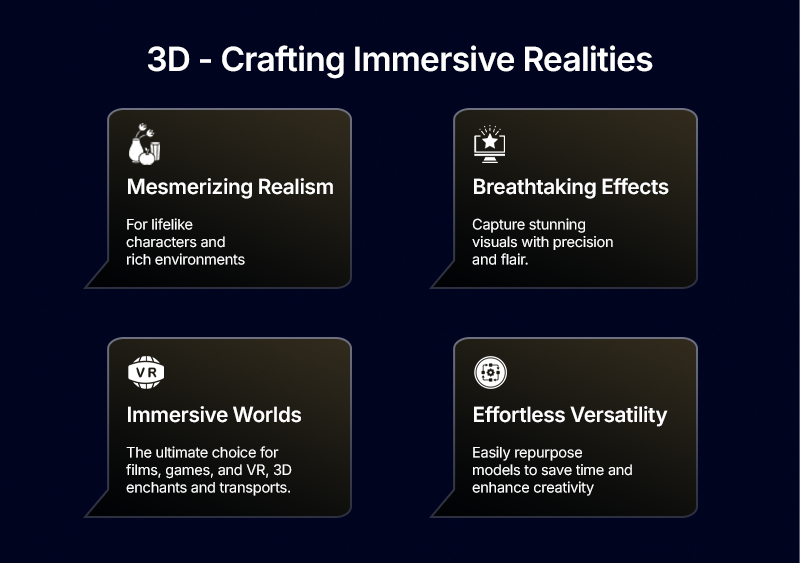2D vs 3D Animation: What’s the Real Difference?
Why Your Favorite Cartoon Feels So Different from Blockbuster Hits

5 MIN READ
Published November 11, 2024

Written By
Harish Selvaraj
So, you’ve probably seen both and 3D animation — one feels like your favorite Saturday morning cartoon, and the other, like a scene straight out of an action-packed movie. But what really sets them apart? It’s not just about how they look, it’s about how they’re made, where they’re used, and what kind of impact they leave.
In today’s blog post, we’re breaking down the real differences between 2D and 3D animation services, without all the fluff. If you’re curious about which one is better for your project or just want to know what makes them tick, let’s dive right in. You’ll walk away knowing exactly what makes each style unique.
But before we dig into those differences, let’s take a quick trip down memory lane to see how animation evolved from flat sketches to the stunning, lifelike worlds we see today.
The Evolution of Animation: From 2D to 3D
Animation has come a long way. Remember those classic 2D cartoons that felt like magic as a kid? They were created by drawing each frame by hand. A slow, detailed process. Fast forward to today, and we’ve got 3D animation that can bring characters to life with stunning realism, from lifelike creatures in movies to immersive video games.
The shift from 2D to 3D didn’t happen overnight. As technology advanced, so did the ability to create more depth, movement, and detail. While 2D animation still holds its charm in many forms of media, 3D has opened the door to a whole new world of possibilities, making it the go-to for movies, games, and even virtual reality.
Both styles have their own place in the world of animation. One isn’t better than the other, just different in how they work and what they bring to the table.
Key Differences Between 2D and 3D Animation
Now, let’s break it down further by comparing the key differences between 2D and 3D animation.
| Aspect | 2D Animation | 3D Animation |
|---|---|---|
| Dimension | Flat, uses width and height only | Adds depth, creating a more realistic look |
| Creation Process | Hand-drawn or digital frame-by-frame | Digital modeling and manipulation |
| Cost and Time | Generally more affordable and quicker | Higher costs and longer production times |
| Flexibility | More creative freedom, abstract styles | Realistic movements, models can be reused |
| Best Use Cases | Cartoons, 2D games, simple web animations | Movies, video games, VR, realistic visual effects |
Both styles have their own charm and purpose, and the best choice really depends on the project’s needs, audience, and budget.
When to Use 2D Animation
2D animation shines when simplicity and charm are key. It’s perfect for projects where you want to capture a light, playful, or artistic feel. They don’t need to be overly complex, but they still grab your attention.
Elevate your eCommerce business with our 2D and 3D services. Let’s collaborate for exceptional growth!
Here’s when you should consider using 2D animation:

- Budget-Friendly Projects: Are you working with a tight budget or short timeline? 2D can save you both time and money, especially for short, simple animations.
- Stylized or Artistic Work: 2D offers a lot of creative freedom. Whether it’s a hand-drawn look or a stylized digital approach, it allows for unique visual storytelling.
- Quick Turnarounds: Need something fast? 2D animations can often be produced more quickly, making it a good choice for short-term projects.
- Nostalgic or Casual Vibes: Want to evoke a sense of nostalgia or keep things light and fun? 2D animation has that timeless, approachable charm.
In short, if you’re aiming for something straightforward, cost-effective, or creatively flexible, 2D animation is your go-to.
When to Use 3D Animation
3D animation service is all about depth, realism, and creating a visual experience that pulls the audience in. It’s the perfect choice for projects that need to feel immersive, whether it’s in a blockbuster film or a cutting-edge video game.
Here’s when 3D animation takes the spotlight:

- Realism and Detail: When your project requires lifelike characters, environments, or intricate details, 3D animation excels at creating depth and realism that 2D can’t match.
- Complex Visual Effects: For projects that demand stunning visual effects, such as explosions, intricate movements, or dynamic camera angles, 3D offers more control and flexibility.
- Movies, Games, and VR: 3D is the standard for high-budget films, video games, and virtual reality experiences, where the goal is to fully immerse the viewer in another world.
- Long-Term Use: The beauty of 3D models is that they can be reused and adjusted across different scenes or projects, saving time and effort in the long run.
If you’re looking to create something that feels rich, immersive, and visually dynamic, 3D animation is your best bet.
Key Takeaway: Which Animation Style Is Best for You?
So, which animation style should you choose? Well, it all comes down to what you’re trying to achieve. If you’re looking for something simple, creative, and budget-friendly, 2D animation might be your answer. On the other hand, if you want to go big on realism, complexity, or immersive storytelling, 3D animation will likely serve you better.
Here’s a quick way to decide:
- Pick 2D if... your project is focused on simplicity, a playful or artistic vibe, and needs to be cost-effective.
- Go for 3D if... your project demands realism, depth, and that “wow” factor for a full immersive experience.
At the end of the day, both 2D and 3D animation have their strengths. The best choice is the one that aligns with your project’s goals, budget, and audience. Still unsure which style is best for you? Let’s chat and find the perfect fit for your project.
About the writer :
Harish Selvaraj heads Zealous Services' 3D animation and modeling projects, bringing over 17 years of experience in delivering top-tier 3D solutions. ...He collaborates directly with clients to ensure their ideas are transformed into powerful 3D results that meet both creative and business goals. Harish is deeply involved in driving sales and managing teams, making sure that each project delivers on quality while helping businesses grow through impactful 3D designs.
Read More